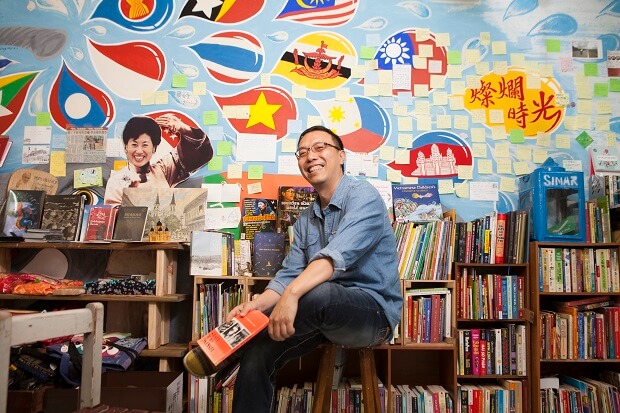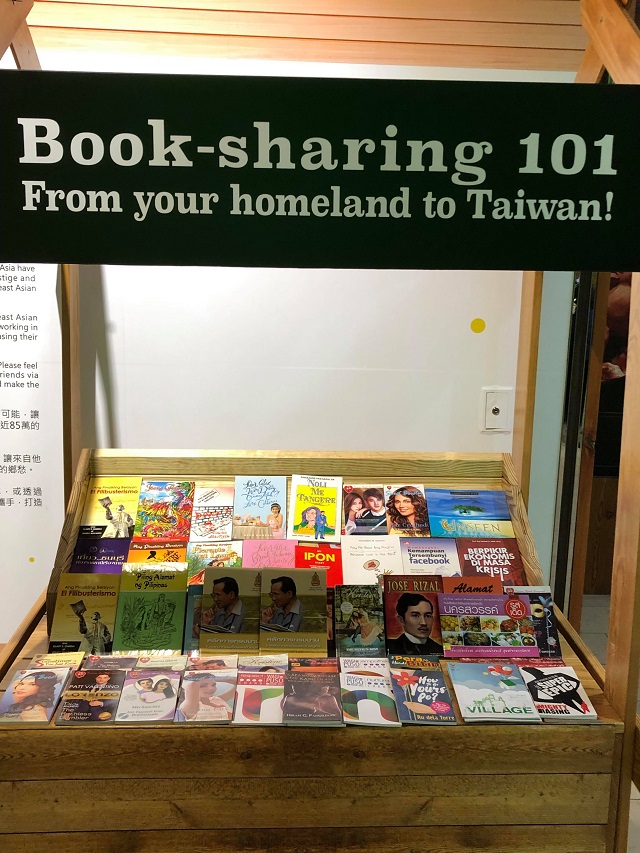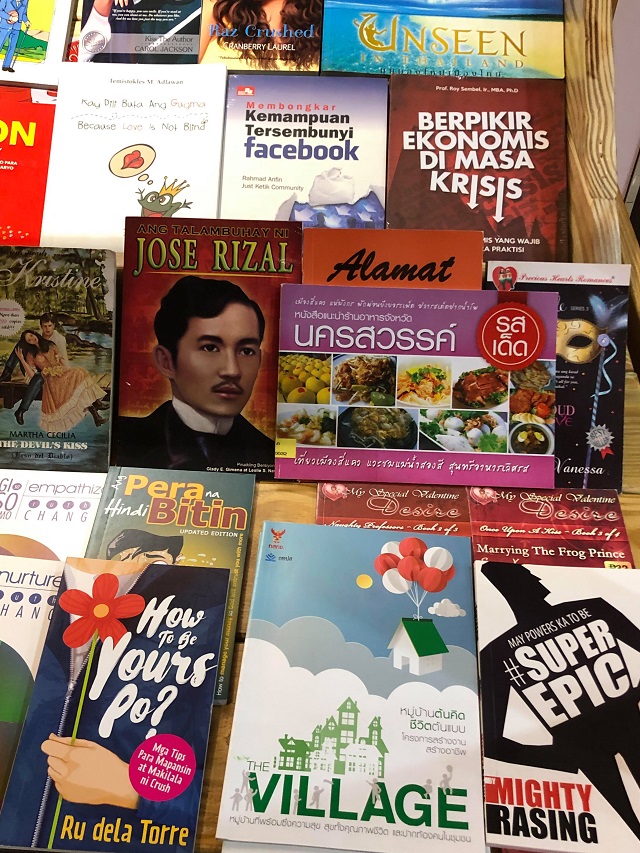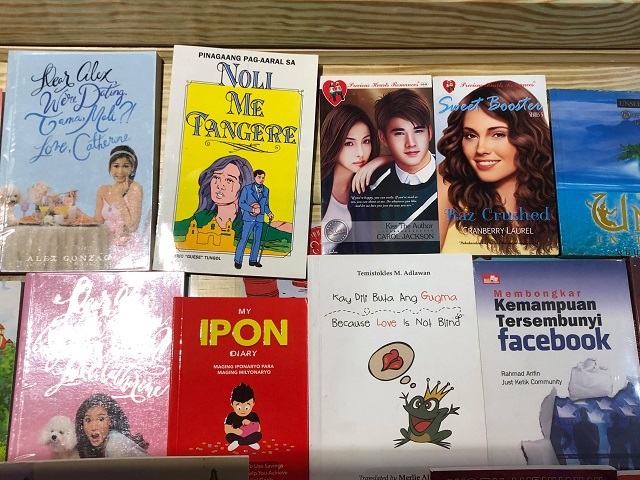Taipei 101 and Southeast Asia
World’s Tallest Charity Platform

Source:Liao Yun-chang
More than a tourism landmark, Taipei 101 practically symbolizes Taiwan. It has also become a spiritual beacon for Southeast Asian guest workers in Taiwan. What truly makes it great is not its height, but its stature.
Views
World’s Tallest Charity Platform
By Chang Chengweb only
Taipei 101 is visible from all over the city of Taipei. And such a tall building, once the world’s tallest, automatically lends itself to becoming a symbol of Taipei - if not all of Taiwan.
Taipei 101 is certainly tall, but to me it lacks appeal. The space inside is occupied by exactly the same cookie cutter big name department stores one finds all around the world. And all the fanciful coral motifs, which may on the surface appear to represent Taiwan yet really do not - in fact they symbolize environmental damage - are just not my cup of tea.
What is more, this building cannot even keep a bookstore alive (Taipei 101 once housed the Page One bookstore, which ultimately shut down).
Whether looking up from street level or overlooking the city from the Taipei 101 observation deck, I am invariably reminded of author Chang Hsi-kuo’s science fiction story The City of the Bronze Statue.
In the story, a bronze statue originally rose 100 feet over the city of Soron. No matter who occupied the city, their first order of business would be to kill off their opposition, then melt the vanquished soldiers’ armor together with the existing statue, to be used as raw material for casting a new statue. After a millennium of conquests and wars, in which rule over the city changed hands dozens of times, the statue has grown taller and taller, reaching nearly 1,000 feet.
Although re-casting such a gigantic statue costs significant labor and money, requiring each one be built has became a curse. One ruler who gave a command not to re-cast the statue is assassinated the very next day. Statue worship has become the state religion, and when the inhabitants of other planets are forced to convert to the religion, interstellar war breaks out. Soron City is ultimately defeated, the statue destroyed, and the civilization collapses.
A Towering Beacon for Migrant Workers
Those in power tend to favor grandiose gestures and vanity projects, while the masses are often irrational. And tall buildings happen to bring out all of these flaws in people. The message of The City of the Bronze Statue added to my disdain of the Taipei 101 building. That is, until hearing about what it means to some migrant workers softened my stance.
Whenever Tsao-yun, a Vietnamese worker who moved to Taiwan over a decade ago, misses her family, feels trapped by work, or low in energy, she heads out onto the deck to look out at the Taipei 101 building.
Always standing there, day and night, it never fails to energize and encourage her, fortifying her determination to stand tall and unshakable like Taipei 101, and to one day return to live in Vietnam in style.
Fine, I get it. Huge, towering buildings instinctively instill awe in people. And this building also happened to be the world’s tallest, and is still the tallest building in Taiwan. For foreign laborers on the lower rungs of Taiwanese society, it holds a definite spiritually uplifting stature.
Beyond that symbolic significance, what else is Taipei 101 good for? When Angela, a longtime friend of ours at the Brilliant Time Southeast Asia-themed Bookstore, became an executive at Taipei 101, a window of opportunity opened up.
 Chang Cheng of the Brilliant Time Bookstore wants books to keep circulating to accumulate wisdom. In line with this ethos, they often encourage readers to make their own notes in the margins. And they frequently wheel a trunk filled with books to Taipei Main Station in search of readers.
Chang Cheng of the Brilliant Time Bookstore wants books to keep circulating to accumulate wisdom. In line with this ethos, they often encourage readers to make their own notes in the margins. And they frequently wheel a trunk filled with books to Taipei Main Station in search of readers.
Every Sunday afternoon, we set up a pop-up bookstore on the floor of Taipei Main Station’s grand concourse, lending books free of charge to immigrants and migrant workers from Southeast Asia. On this day, Angela sits with us on the train station floor, relating at length her vision for Taipei 101. In addition to maintaining its core mission as a financial building, she wants it to convey Taiwan’s unique human spirit and character.
Especially given the increase in the number of tourists to Taipei 101 from Southeast Asia in recent years, it is worth considering if, other than posing for a photo, checking in or the attraction of various material goods, they might be able to come away instilled with a deeper sense of Taiwan’s cultural and human qualities.
I am aware that quite a few Southeast Asian tourists have visited Taiwan in recent years. These tourists, having both money and leisure time at their disposal, are different from the Southeast Asian migrants and guest workers at the lower strata of society that we have long focused on, separated by an unbridgeable social chasm. In spite of this, given the nationalities and languages in common, perhaps we can do something like this:
Ask Southeast Asian tourists to bring a book from their home country when they come to visit Taipei 101. We will then distribute them to Southeast Asian migrant workers all over Taiwan.
In a heartwarming story that demonstrates the kindness of the Taiwanese people, four years ago, we launched a “bring a book you can’t read back to Taiwan with you” campaign. We appealed to the good people of Taiwan to purchase a “book you can’t understand” and bring it back to Taiwan, to be given to someone from Southeast Asia who is able to read it.
Further, it also encouraged Southeast Asian tourists to get involved, doing something for their compatriots abroad in Taiwan beyond mere tourism, and making their visit more than just a tour.

Source: Liao Yun-chang
A Book from Home
In late 2018, Taipei 101 reached out to the Brilliant Time Bookstore to borrow some books for a “Bookstand From Home” in the fifth floor lobby - a mandatory stop on the way to the observation deck. There, they set up a display on an entire wall explaining the origins of the project, while simultaneously presenting a free book offer per guest worker for each observation deck ticket.
This was easier said than done, however, as getting people to take action presents a host of difficulties.
One of Angela’s colleagues got in touch with travel agencies around Southeast Asia, planning to begin promotions with group tour travelers. One issue she failed to take into account was the various weight restrictions on luggage instituted by travel agencies, who have little interest in any activities that do not contribute tangibly to their bottom line. Even when information is given out, as tour members rarely do their homework prior to heading to the airport, they are usually completely unaware of such things.
Not giving up, marketing staff shifted their attention to individual travelers, using international ticketing platforms to inform travelers about the Taipei 101 book drive while they are purchasing their tickets, and offering a sweetener: just bring two books to the information desk to receive an exclusive “mystery gift” as a token of appreciation.
Visitors bearing books began appearing at the Taipei 101 observation deck box office this past February, first one, then two, then three, and then nearly every day. By the end of the month, Taipei 101 had already collected over 300 books from Southeast Asia.
Many of the titles were romance novels, as well as biographies, cook books, and comics - all sorts of second-hand books.

Source: Liao Yun-chang
One can almost picture it: tourists packing their bags just before leaving, going over their bookshelves making selections, hesitating, changing their minds, and finally deciding on which books to stuff in their luggage. And what a warm, sweet picture it is!

Source: Liao Yun-chang
We can imagine the ensuing “reading journey”: The books leave the hands of a first-generation Taiwanese of Southeast Asian parentage, making their way from Taipei 101 to the library on the floor of the Taipei Main Station main concourse, Taichung ASEAN Square, Tainan Park, Kaohsiung Station, a Taitung fishing village, and various and assorted Brilliant Time affiliate branches around Taiwan, both large and small.
Have you read? More stories from migrant workers in Taiwan:
♦ Migrant Workers Should Get the Day-Off
♦ Opinion: The Opaque Market of Foreign Domestic Work in Taiwan
♦ 'I Call Taiwan My Second Home'
Migrants and guest workers abroad, reading a book in their hands in their native language brought over by a compatriot, soothing their minds after many years of living abroad. And Taipei 101 is the nexus for all of this.
Becoming the world’s tallest building required technology, skills and money; becoming the world’s most charitable place takes goodwill and generosity. What is worth pursuing is not height, but stature; not grand scale, but greatness. One step at a time, we are on our way.
Translated by David Toman
Edited by Sharon Tseng

Opinion@CommonWealth website is a sub-channel of CommonWealth Magazine. Founded in January 2013 with its main focus on social, humanity and policy issues and opinions, Opinion@CommonWealth is dedicated to building a democratic, diverse platform where multi opinions can be presented.
Currently, there are approximately 100 columnists and writers co-contributing on Opinion@CommonWealth to contemplating and exploring Taiwan's future with the Taiwanese society.







